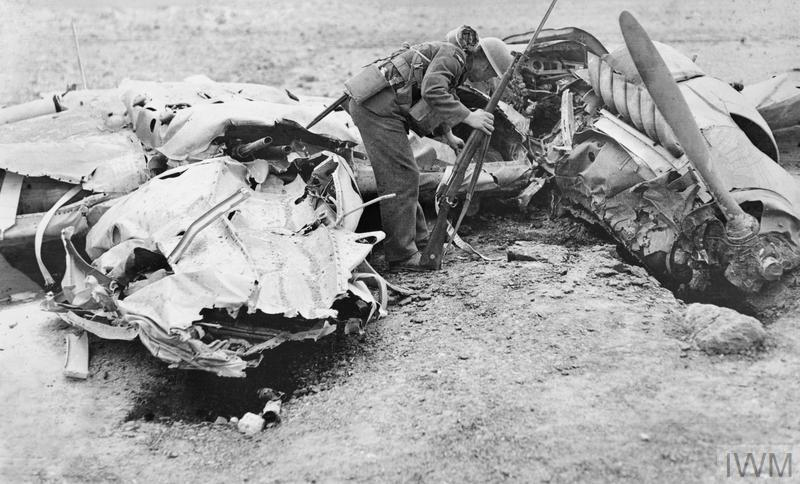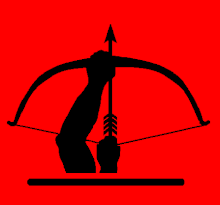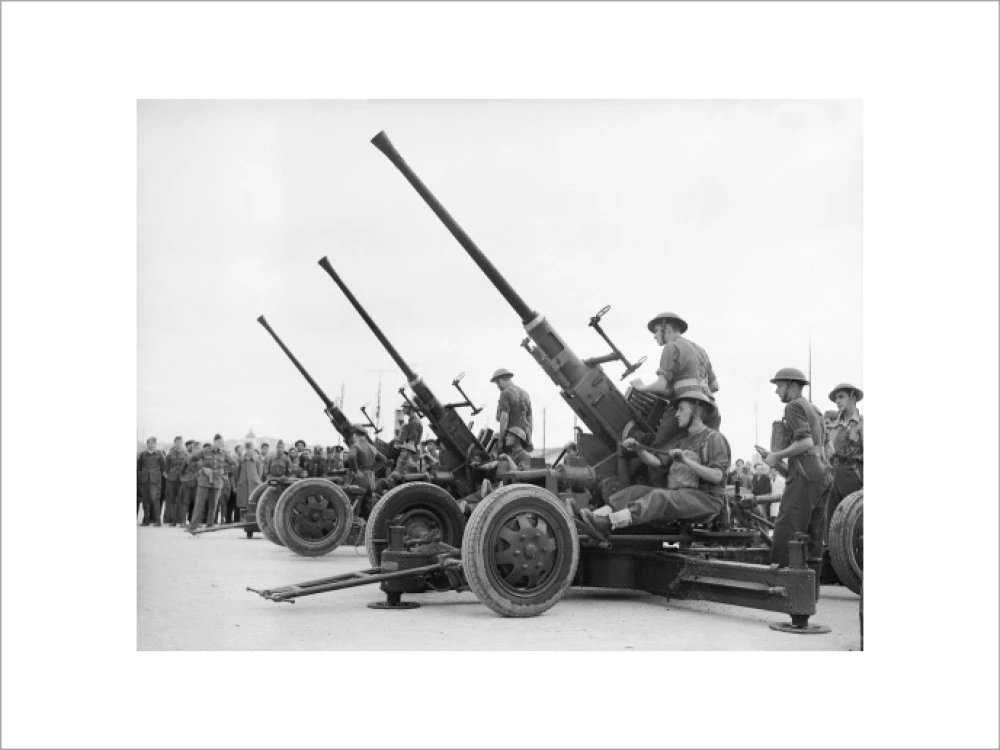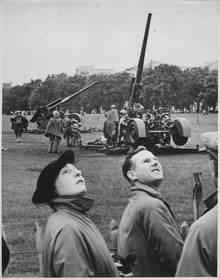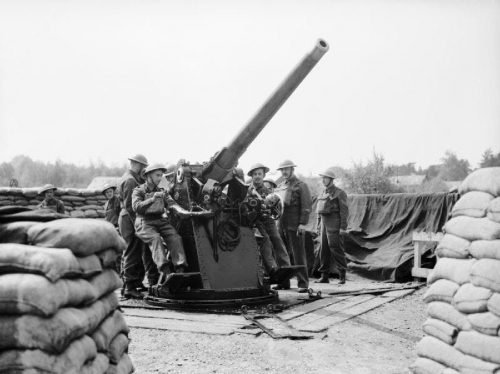The @BritishArmy Anti-Aircraft Command was a crucial part of the Dowding System. It operated searchlights and anti-aircraft guns against incoming German raids. Anti- aircraft guns shot down approximately 300 Luftwaffe aircraft during the #BattleOfBritain.
The 1937 review of the Air Defence of Great Britain had estimated that 1200 light AA guns would be needed. By the outbreak of war, AA Command had received only about 80 of the new Bofors 40mm guns. A number of old 2 pdr guns were used, but this only took numbers to just over 200.
By July 1940, AA Command operated 1280 medium, and 517 light anti-aircraft guns. Although searchlight batteries had initially been operated by @Proud_Sappers, overall responsibility for ground-based air defence was assumed by the @rhqra
Responsibility for the protection of London belonged to 1st Anti-Aircraft Division, with more than 120 heavy guns. The rest of the south-east was the responsibility of the 6th Anti-Aircraft Division, with nearly 200 heavies, including the new 3.7 & 4.5 inch.
No 30 (Balloon Barrage) Group was also responsible for the protection of London and the south-east of England with more than 500 balloons, which were able to reach heights of up to 5,000 ft. The balloons were deployed to bombers at height so reduce bombing accuracy.
We can look at RAF Kenley& #39;s airfield defences as a good example. Its main airfield defences consisted of two 3 in anti-aircraft guns manned by the 148th Light AA Battery, 4 smaller 40 mm Bofors guns manned by the 31st Light AA Battery and several Lewis machine guns.
Kenley was 1 of 26 sites (airfields and aircraft factories) that were defended with Parachute and Cable (PAC) installations. These fired salvos of rockets to a height of 5-700ft. Each rocket deployed a steel cable designed tear through the flying surfaces of low level raiders.
PAC did have some success and it is credited with bringing down a Do17 in a low-level attack against Kenley during the early afternoon of 18 August. In addition to the one brought down, a second was hit and crashed near Biggin Hill.
http://spitfiresite.com/2010/08/battle-of-britain-1940-kenley-raid-parachute-cable.html">https://spitfiresite.com/2010/08/b...
http://spitfiresite.com/2010/08/battle-of-britain-1940-kenley-raid-parachute-cable.html">https://spitfiresite.com/2010/08/b...

 Read on Twitter
Read on Twitter